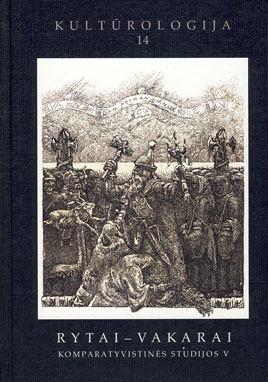Mitinių formų metamorfozės meno raidos keliuose iš Rytų į Vakarus
Metamorphoses of Mythical Forms in Art Ways From East to West
Author(s): Odeta ŽukauskienėSubject(s): Cultural history
Published by: Lietuvos kultūros tyrimų
Keywords: Baltrušaitis; comparative art history; east-west; medieval art; mythical forms; exotic images
Summary/Abstract: The aim of this article is to discuss the metamorphoses of mythical forms and exotic images in medieval art that were examined by henri focillon's school members and especially by one of the most prominent it's representative Jurgis Baltrušaitis who has created new comparative methods of art history. Analyzing the evolution of immanent art structures, the study reveals methodological instruments that exposed the influences of different civilizations, complicated interactions of symbols and visual systems, survivals, revivals and the manifestations of historical memory. The study also discusses the development of mythical forms in the ancient world and its spreading into western art. Owing to analysis of the ways of mythical forms (cosmographical and ornamental or geometrical motifs) Baltrušaitis revealed "other" face of medieval art because the survived mythical forms reflected not a "realistic" and individuality of man emphasizing middle ages but "irrealistic", full of ancient myths and legends that were constantly under metamorphoses. Thus comparing similar mythical forms in different civilizations, Baltrušaitis detected its historical changes and local originalities that conceptually based his theory of interactions between east and west. The essence of the theory - symbolic abstractions of mythical forms so characteristic to eastern and protohistorical european art in the ways of historical development were influenced by local traditions of different cultures; that defined a variety of these forms which helped to express the supernatural world, suppressed desires and fears. The author of the article discusses the mythical forms and their genealogies as analyzed not only by Baltrušaitis, but also, when it comes to other aspects, by other Lithuanian scientists, among whom we could mark out Algirdas Julius Greimas, Norbertas Vėlius and his disciple Gintaras Beresnevičius.
Journal: Kultūrologija
- Issue Year: 2006
- Issue No: 14
- Page Range: 117-141
- Page Count: 24
- Language: Lithuanian

